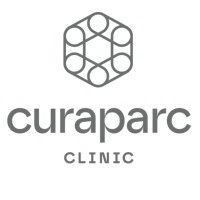Hyaluronic acid and autologous blood therapy as alternatives to endoprostheses?
Can hyaluronic acid and autologous blood therapy prevent an endoprosthesis?

As joint wear increases, many people are faced with the decision of whether they should improve their quality of life through an endoprosthesis (joint replacement). Hyaluronic acid and autohemotherapy (also known as ACP and PRP) have come into the spotlight as potential alternatives in recent years. These therapies use the body's own healing powers and biologically active substances to relieve pain and improve joint function. But how effective are they really? Can they delay or prevent endoprosthesis in advanced cases?
How do hyaluronic acid and autologous blood therapy work?
- Hyaluronic acid is injected directly into the joint, where it acts as a lubricant and shock absorber. It can improve joint sliding and reduce inflammation, especially in so-called “dry” osteoarthritis, in which the joint is painful due to friction.
- Autohemotherapy (ACP/PRP) is based on concentrated platelets rich in growth factors. These stimulate tissue regeneration, relieve inflammation and promote cell regeneration, which can be helpful in relieving pain.
Areas of application and effectiveness in advanced osteoarthritis
The two forms of treatment show promising results for mild to moderate osteoarthritis. However, in advanced stages, success is often limited:
- Knee osteoarthritis : Studies have shown that hyaluronic acid and PRP can slow the progression of osteoarthritis and relieve symptoms of moderate osteoarthritis. However, if the cartilage is severely damaged, the effectiveness decreases.
- Hip osteoarthritis : Since the hip joint is anatomically deeper and has more sensitive structures nearby, the use of hyaluronic acid or PRP is more complex and carries a certain risk. With advanced hip osteoarthritis, the chances of success decrease because the tissue is often already too damaged.
When is an endoprosthesis the better solution?
In cases where the cartilage abrasion is already advanced, hyaluronic acid and autologous blood therapy can usually only relieve the pain for a short time. Signs that an endoprosthesis may be more appropriate include:
- Persistent pain that also occurs at night and affects sleep.
- Restricted mobility that limits everyday activities.
- No or little improvement in symptoms after hyaluronic acid or PRP treatments.
Studies on effectiveness and sustainability
- Long-term studies of hyaluronic acid show that patients with moderate osteoarthritis benefit most from it. The positive effect is usually limited to around 6-12 months, after which the effectiveness decreases.
- PRP studies have shown a slightly stronger and longer-lasting effect on moderate osteoarthritis, particularly of the knee joint. The pain-relieving effects can last up to a year, but depend heavily on the severity of the osteoarthritis.
Advantages and risks of each method
- Hyaluronic acid : Easy to use and well tolerated, but only limited effect in severely advanced osteoarthritis.
- ACP/PRP : More effective for mild to moderate osteoarthritis, but more complex to perform and more expensive. In advanced stages the effectiveness is reduced.
When does combination therapy make sense?
For patients in the middle stages of osteoarthritis, a combination therapy of hyaluronic acid and PRP or other approaches such as physiotherapy and exercise training can achieve the best results. However, in the advanced stages, often only an endoprosthesis can provide long-term relief and mobility.
Conclusion: Hyaluronic acid and PRP as an option before endoprosthesis
Hyaluronic acid and ACP/PRP offer a valuable but limited alternative to arthroplasty for patients in early to middle stages of osteoarthritis. In the case of advanced osteoarthritis, patients should, after a comprehensive consultation at the ENDOPROTHETICUM, consider whether a joint replacement is ultimately the more sustainable solution.
MAKE AN APPOINTMENT?
You are welcome to make an appointment either by phone or online .



























